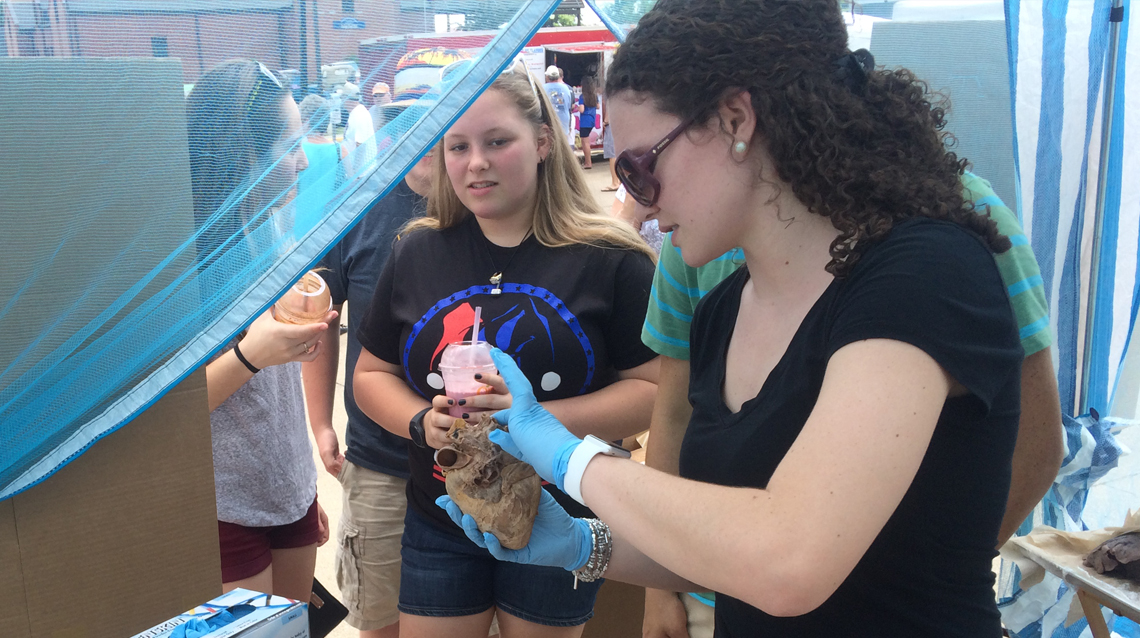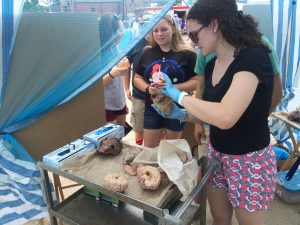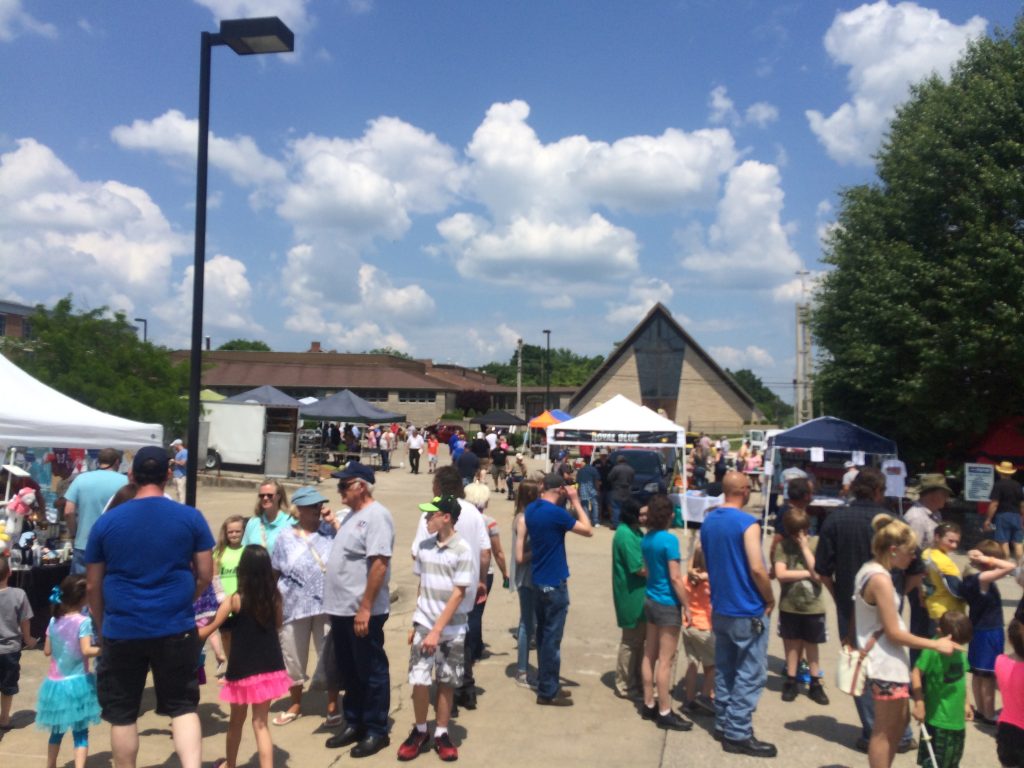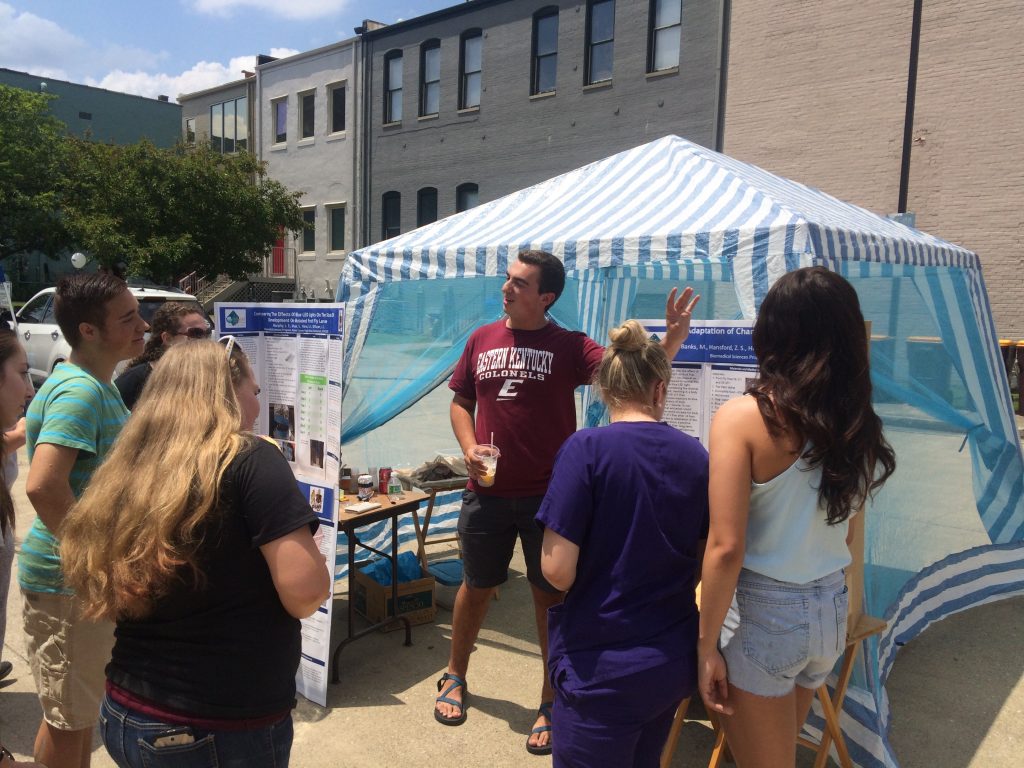Brief
The Healthy Flea Market
Connected Science Learning November 2016-January 2017 (Volume 1, Issue 2)
By Robin Cooper, Kim Zeidler, Diane Johnson, and Jennifer Wilson

Learn how rural students in Kentucky shared their classroom knowledge by presenting on health topics and new technologies at flea markets, swap meets, and specialty events such as car shows.
Students can present their classroom work in a number of ways. One popular approach is an open house at the school. Such events often feature booths where parents and students can participate in various learning activities. Because these open houses usually only cater to the students and families associated with that particular school, the impact is limited to those people, and the wider local community is not engaged in students’ learning. Additionally, in rural areas, these types of events are sometimes difficult for families to attend during weekdays or weeknights, due to distance and work schedules.
We created an approach through which students in rural Kentucky can share the new knowledge learned in the classroom with a larger audience, rather than only the people associated with their school. Flea markets, swap meets, and specialty events such as car shows are typical rural Kentucky weekend activities for families from all social backgrounds. Our students exhibit their knowledge at these events, allowing them to obtain feedback from the wider community. Students also learn about new potential applications of their learning, which they might not have considered in a school setting. Local professionals can see students presenting their work and engage with students.
Recently, a group of high school students held a “Healthy Flea,” a twist on the traditional flea market. Students presented to the public on health topics and new technologies related to optogenetics. The presentations featured students’ school-based research projects with fruit flies and their genetic lines, which can be stimulated with light to activate subsets of neurons (ones that release dopamine, gamma-Aminobutyric acid, or serotonin, or sensory or motor neurons). Students investigated alterations in the flies’ development and behaviors. These students also presented at the Somernites Cruse car show in Somerset, Kentucky, which attracted thousands of people from all over the state, as well as neighboring states (see photos). The Healthy Flea gives students a sense of place in their community and allows them to share their work and educational experiences.
One high school student, Clara de Castro, was featured at a County Extension Office community event. She presented her research on how the fruit fly heart works and why it is used as a model for human diseases. Her presentation was a huge hit, more popular than many other booths directed at the general public. Participants were generally from a low economic background and were interested in learning from this high school student.
 Mentoring support was provided to the high school students by undergraduate and graduate students from the University of Kentucky. Such interaction allowed for casual conversations about college life and potential college majors. The college students went to high schools to help science teachers implement some of the activities in their classrooms. They also mentored the high school students on classroom content and group thematic projects, such as a health-related one focusing on metabolic syndrome. In some cases, college students built a rapport with teachers, who later scheduled field trips to the university with their classes to see the research laboratories and tour the campus. In some high schools, a mentoring program has been established using Acclaim, which allows blogs and video presentations to be critiqued by mentors and fellow students.
Mentoring support was provided to the high school students by undergraduate and graduate students from the University of Kentucky. Such interaction allowed for casual conversations about college life and potential college majors. The college students went to high schools to help science teachers implement some of the activities in their classrooms. They also mentored the high school students on classroom content and group thematic projects, such as a health-related one focusing on metabolic syndrome. In some cases, college students built a rapport with teachers, who later scheduled field trips to the university with their classes to see the research laboratories and tour the campus. In some high schools, a mentoring program has been established using Acclaim, which allows blogs and video presentations to be critiqued by mentors and fellow students.
We hope other communities will find this a successful approach for combining in-school and out-of-school STEM learning.
Robin L. Cooper (robinlewiscooper1@gmail.com) is an associate professor at University of Kentucky in Lexington, Kentucky. Kim Zeidler (kim.zeidler@uky.edu) is director of the Partnership Institute for Math and Science Education Reform (PIMSER) at University of Kentucky in Lexington, Kentucky. Diane Johnson (diane.johnson@uky.edu) is a regional teacher partner with PIMSER at University of Kentucky in Lexington, Kentucky. Jennifer Wilson (jennifer.wilson@pulaski.kyschools.us) is a science teacher at Pulaski County High School in Somerset, Kentucky.




